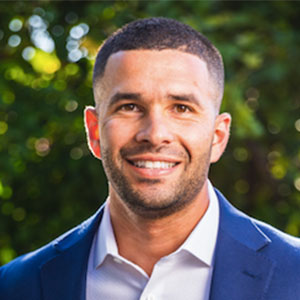
As I began to transition out of the Marine Corps in 2015, I started a firearms training company, Defensive Tactics and Firearms, as a side hustle. Like many new instructors, the primary purpose of the business was to cover the cost of training I was attending and write off associated expenses. However, what started as a fun gig grossing less than $5,000 the first year has transformed into one of the premier training organizations in Southern California, bringing in around $150,000 annually.
Over the past seven years, our team has trained and educated upward of 10,000 students, including nearly 1,000 instructors. Along my journey, I have had the opportunity to learn from, collaborate with and train hundreds of current or former law enforcement officers. Many of these officers came to us to earn their instructor certifications as they began their own journey into the civilian firearms training world. I want to share with you my experience as a civilian firearms trainer, the lessons I have learned along the way and some of the challenges law enforcement faces transitioning to the civilian market. Here are five tips to turn your passion into a paycheck.
Embrace lifelong learning
What is the one thing industry titans and top-tier instructors have in common? They are all lifelong learners. The absolute best men and women in the firearms training community will proudly tell you they are students before they are instructors. The standard for most top-tier instructors is a minimum of 100 hours of continuing education annually. This education includes instructor certification courses exploring how to teach students to shoot, curriculum development, adult learning theory and professional speaking. Embracing being a student first means attending classes that do not offer an instructor certification. Many of the best instructors seek training from their peers. This training covers a wide variety of topics, including firearms courses, less-than-lethal options, combatives training, emergency medicine, human performance and the legal aspects of self-defense.
The best instructors are also humble enough to know that teaching and learning are not one-way streets. I have lost count of the number of times when I have invited a student to the front of the class to drop knowledge I didn’t have or to demonstrate a shooting technique I was unfamiliar with. I have had students who were medical professionals explain how human anatomy translates into gripping a pistol, attorneys detail how evidence that would support a claim of self-defense gets suppressed and students who had survived a life-threatening encounter share their experience. Every interaction, whether it is with a student or fellow instructor, is an opportunity to learn and increase your craft as a trainer.
Tactical or practical?
One question to ask yourself is, “What type of courses do I want to offer?” Another way to phrase this is, “Do I want to focus on tactical training or practical training?” I am not saying these two categories are mutually exclusive. However, as you begin to establish your brand, I would highly suggest focusing on one or the other, as you will be marketing to two distinctively different audiences. I knew from my research that concealed carry courses generated the most revenue out of all firearms training classes, with introductory handgun training coming in a close second. These were “practical” courses. Being an infantry Marine, I still wanted to offer the sexy, tacti-cool training around using a rifle in an urban environment. What this did was create confusion and hesitation for potential clients. Students seeking practical training were intimidated by the high-speed courses, and those looking for tactical training didn’t view me as “legitimate” because my primary focus was training beginning to intermediate shooters. I had diluted my brand.
Another lesson I learned the hard way was choosing which courses to offer. As my company began to grow, I started offering a wider variety of classes. At one point, I had CCW classes, basic and instructor courses for pistol, rifle and shotgun, hunter safety classes and a number of seminars on our calendar. The number of students in our CCW and basic pistol classes remained consistent, but most of the other courses were hit or miss. While we saw an increase in the total number of students, any increase in net income was almost non-existent. By offering so many classes, I was essentially competing against myself.
For example, on a weekend, I could run a two-day instructor development course for 10 students at $200 each. Or, on Saturday, I could run a basic pistol class for 10 students at $100 each, and on Sunday, I could host a CCW course for 10 students at $200 each. Making $3,000 over $2,000 is a no-brainer. One of the greatest lessons I learned from this time period is if you try to sell everything, you will sell nothing.
Target your market
Every market is unique. It is crucial as a new instructor to become familiar with the students, as well as the competitors, in your area. The best way to achieve both these goals is to take your competitors’ courses! You heard me right. Give your future adversaries your money. This has a wide range of benefits. First and foremost, you are a lifelong learner! You might walk away with a new training aid, phrase or shooting technique compliments of your competition. Second, this is going to help establish the cost of your courses.
By going to other trainers in your area, you will be able to see what students get for the price of the course. Does the trainer have to rent classroom space, offer handouts, provide food and beverages or give students other classroom materials? Are range fees, firearm rentals, ammunition or targets included in the course cost? Many times, the price of a course is determined by these details. Finally, by being a student in your competitors’ classes, you will be able to better articulate why students should train with you instead of with “them.” I don’t mean bad-mouthing other instructors in your area to potential clients. What I mean is you will be able to better market your classes and explain the curriculum being offered, as well as your value as an instructor.
Sell yourself, not your service
As a current or former law enforcement officer, you have an incredible advantage over your competitors. The majority of students will automatically seek you out because they assume you are an authority on legal matters and a highly skilled shooter. You should 100% capitalize on this when it comes to marketing your courses. Your background in law enforcement should be one of the first things clients learn about you when visiting your website, especially if you are teaching CCW classes. Be sure to strike a healthy balance between touting your career and not losing clients who think the course is beyond their capabilities.
Student-centered teaching
Now, let’s address the elephant in the room. The overwhelming majority of law enforcement officers are neither an authority on legal matters nor highly skilled shooters. Moreover, even if an instructor checked both those boxes, it doesn’t mean he or she knows how to connect with students and transfer that knowledge or skills in a meaningful way. This is where student-centered teaching comes into play. Student-centered teaching is the ability of an instructor to adapt their curriculum delivery in a manner that ignites a student’s passion for learning, pushes them to the limits of their abilities, instills a conceptual understanding of key concepts and meets students exactly where they are physically, mentally and emotionally.
If you want to truly set yourself apart from other instructors and become a powerhouse in your region, take the time to get to know your students. Find out the true reason they are in your class and what variables might be holding them back from realizing their full potential. Even if you only have students for a short time, focus on building personal relationships and getting to know how each student learns and retains information. In other words, shoot less and talk more. Take a hard look at your learning objectives and determine what it is you really need students to walk away with and what “fluff” is taking away from students reaching their own objectives. As my good friend and owner of Redhawk Firearm Training, Samuel Middlebrook, says, “I have no idea how I am going to teach a class until I get to know my students.”
To all of my fellow lifelong learners and future industry leaders, I cannot wait to see the impact you have and to one day be a student in your class.
As seen in the April 2022 issue of American Police Beat magazine.
Don’t miss out on another issue today! Click below:






